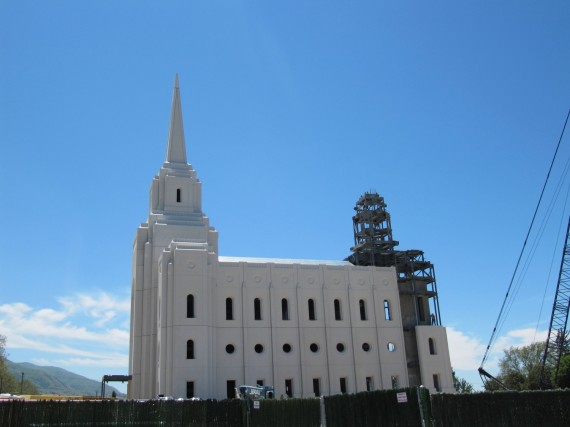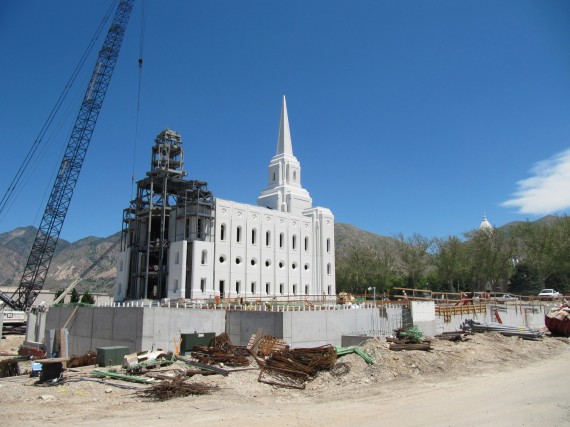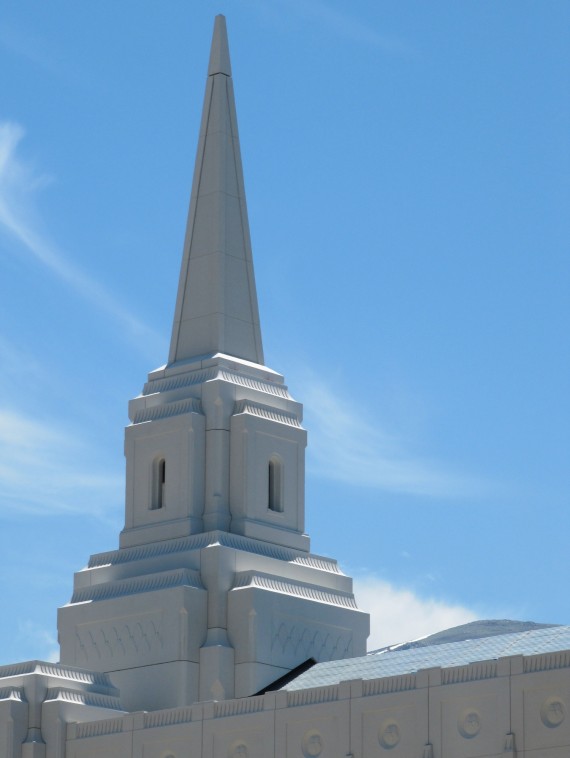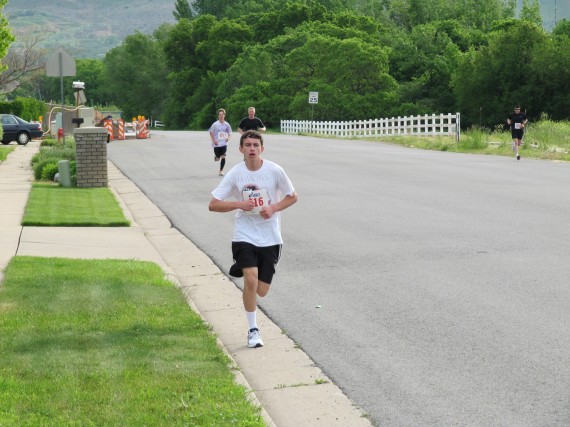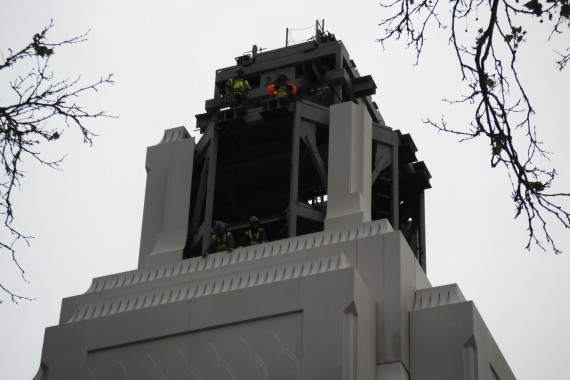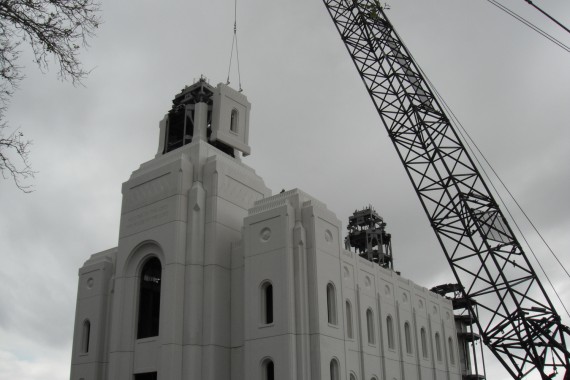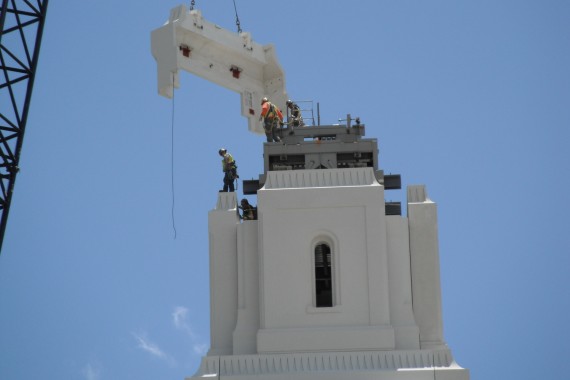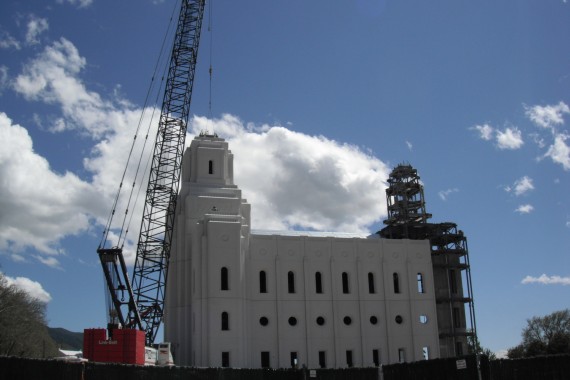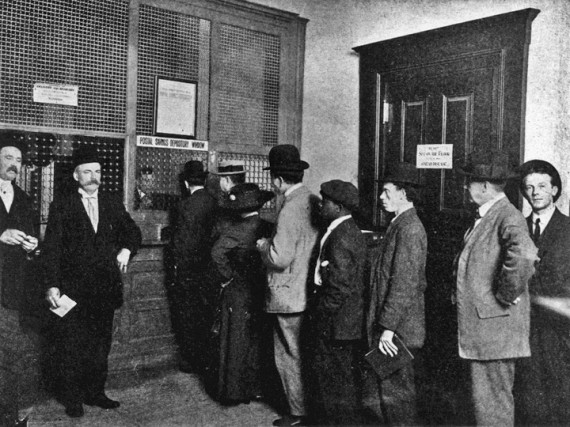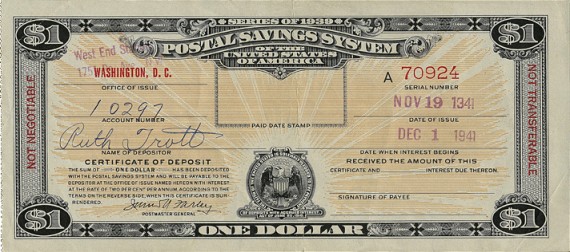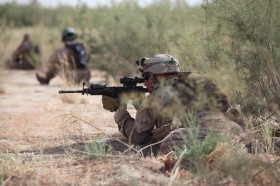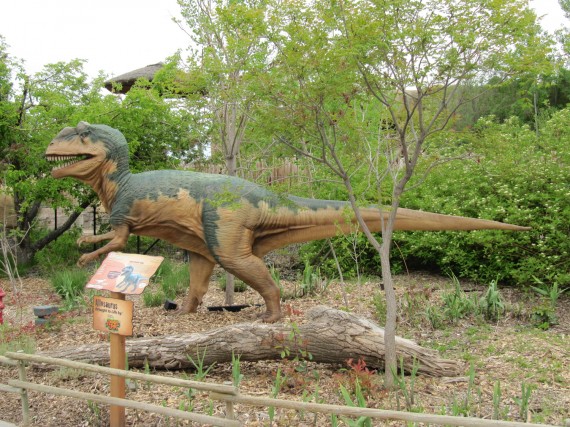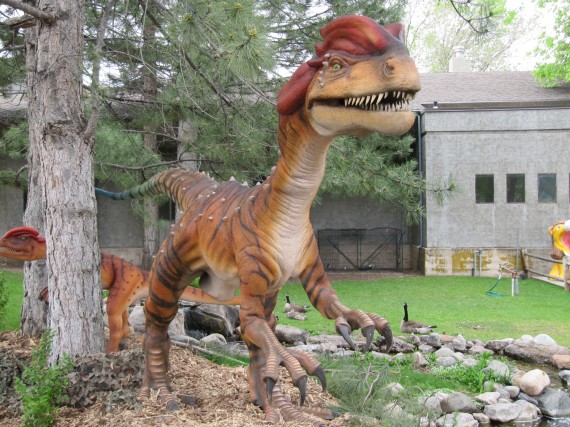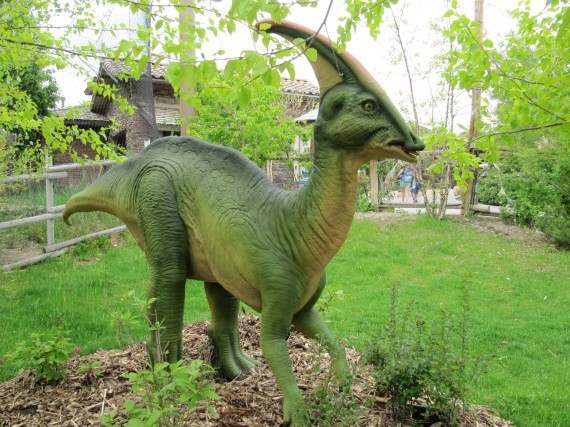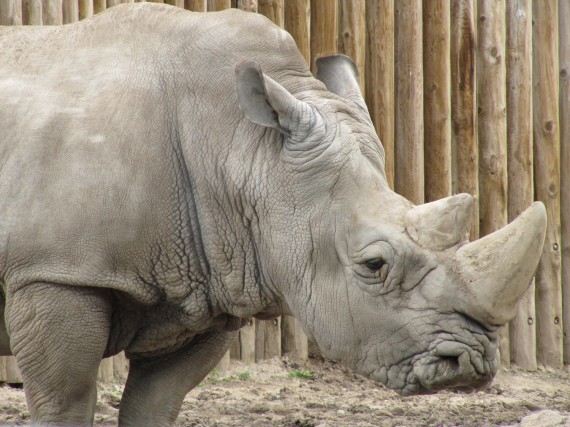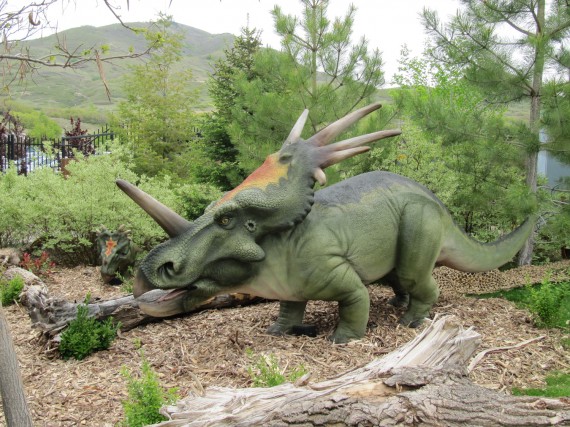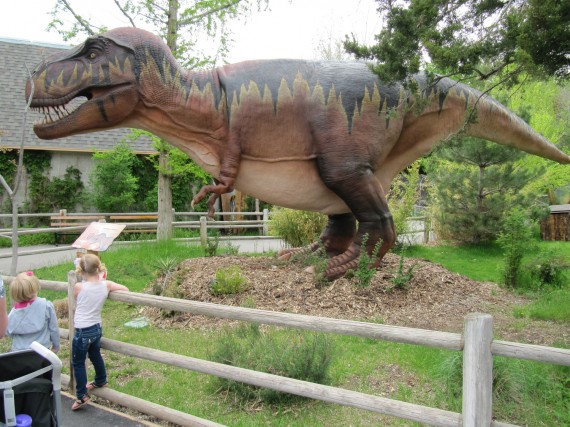
One of my gifts on Father’s Day was thirty-two bottles of root beer — all different. I will have to sample every one to tell you my favorite. I had a great Father’s Day with good food and good family.

Precision Smokestack Targeting

Once in awhile I read an amusing quote. There was one recently in an article by The Wall Street Journal reporting on the Pentagon’s first cyber strategy. Part of the plan warns nations of the consequences of attacking the U.S. by hacking computer systems. Hackers, supported by national governments, pose as significant a threat to U.S. nuclear reactors, subways or pipelines as a hostile country’s military.
An unidentified U.S. military official said:
“If you shut down our power grid, maybe we will put a missile down one of your smokestacks.”
Previous attacks have originated from Russia and China but often both the perpetrator and impact are unclear.

Kamdyn Ross Brown
Today we had a barbeque at Ty and Alex’s home in honor of Kamdyn Ross Brown. There was plenty of good food and lots of family showed up. The highlight of the evening was the releasing of the blue balloons up to Kamdyn in heaven. It appeared that it might rain but as you can see in the video the weather cleared in time for the balloons to rise high in the sky.

Joint Family Home Evening: 72 Hour Kits

With three of my five children now married I asked them if once a month they would like to get together for a Joint Family Home Evening (JFHE). Everyone agreed so we all met for the first time this month for the purpose of putting together our 72 hour emergency kits. We decided to gradually build up the kits over a period of months.
Readers of my blog are welcome to add any words of advice as this is the first time most of us have tried to assemble a kit that one can actually carry any decent distance.
Three categories I have ranked in order of importance:
- Water
- Food
- Shelter
Water
At our first JFHE the focus was on water. For the kits we assembled:
- Nine 20 fluid ounce bottles of water
- One 2/3 fluid ounce bottle of bleach
- One water filtration bottle
Details
The nine bottles in the photograph are used 20 fluid ounce Gatorade bottles, previously collected, filled with water. This amounts to a total of 1.41 U.S. gallons, or just shy of a half a gallon a day, or three bottles a day, for drinking.
One bottle of bleach is approximately 390 drops. One needs eight drops of regular Clorox bleach to purify a gallon of water, or double that for cloudy water. Even in a worst case the yield will be 24 gallons of water.
I added a label to the bleach that reads “Bleach. 8 drops / gallon. double for cloudy.” This guards against the priesthood from accidentally bleaching the hair of the sick.
To Disinfect Water: If you need to purify water during an emergency, (and don’t have the means to boil it for 3–5 minutes), you can disinfect your water using bleach:
For clear water—add 8 drops (1/8 tsp.) of bleach per gallon of water
For cloudy water—add 16 drops (1/4 tsp.) of bleach per gallon of waterMix the solution thoroughly and let it stand for about 30 minutes before using it. Properly treated water should have a slight chlorine odor. If it doesn’t, repeat dosage and allow water to stand an additional 15 minutes. The treated water can be made drinkable by pouring it between clean containers several times. (Source: The Clorox Company)
Each family has a water filtration bottle. This can be used in conjunction with the bleach to improve the taste of the treated water. The other members of the family would have an additional bottle of bleach instead of the filtration bottle.
Cost
If supplies are already at hand, for example, tap water and household bleach, I count this as no cost.
- No cost — bottles of water, old backpack, bleach, labels
- 40 cents — empty Vial for Consecrated Oil (to carry our bleach)
- $16.50 — Water Filtration Bottle
The families will now have a month to assemble these items, or something similar. Next time we will address food, or at least the main meals.
Thoughts anyone?

Brigham City Utah Temple
Yesterday a visit to the Brigham City temple construction site yielded a few photographs. Last week the focus was on the east spire installation. Now work is progressing on the west side of the temple. It will not be long before we see the west spire erected.
Brigham City History
Commerce
The fruit growing business in Box Elder County was thriving in the 1890s. It had been initiated in 1855 when Wiliam Wrighton went to Salt Lake City, bought 100 peach stones for $1.00 and planted them in Brigham City. Peach production was so successful that the annual harvest celebration, started in 1904, was named Peach Days.
Many men grew fruit on their own property and sold it to supplement other income. William Knudsen, however, raised and sold fruit as his major source of income. He discovered early on that the Brigham City area was particularly adapted for peaches, berries and small fruits. He established a successful fruit growing and shipping business which sustained his family members for generations to come.
The first sugar beets were planted in 1891, and dairy and creamery operations were successful. Prospecting began in the 1890s, and Brigham City’s first newspaper The Bugler started printing in 1890. In 1892 the city’s water and electricity systems were installed. (From: Brighamcity.utah.gov)
Photo Credit: Jill Willoughby

5K Run Walk Bike Rollerblades Skateboards Strollers and Little Red Wagons
Last Saturday was the annual Kaysville Utah South Stake 5K Run. Run in this instance includes walking and transportation such as strollers and little red wagons. I ran in 2008 but in 2010 I merely took photographs, as I did this year. The runners to watch this time are Jill and Mike, pictured below. Not for their turn of speed but to see if they can best their 2008 times.
2008 Results
- Rick 36 minutes 28 seconds, 106th, 8th in class.
- Mike 39 minutes 23 seconds, 114th, 9th in class.
- Jill 45 minutes 19 seconds, 150th, 4th in class.
I believe Mike’s goal was to beat my time as well as his own.
2011 Unofficial Results
- Rick (did not run).
- Mike 27 minutes 59 seconds.
- Jill 43 minutes 15 seconds.

Brigham City Utah Temple Spire
Two weeks ago the Brigham City temple walls were being installed. Yesterday the base of the temple spire was the focus. Today the spire itself will be attached. I took a photograph from the webcam at noon (see below) after the spire was erected. It is looking more like a temple every day.
Video
Brigham City History
Polygamy
From 1852 until 1890, leaders of the LDS Church encouraged male church members, especially those in leadership positions, to marry more than one wife. Following the Old Testament precedent of plural wives, church members had the option, but not the requirement, of plural marriages. They believed they were protected in this practice by the freedom of religion clause in the Bill of Rights. Because of widespread negative reaction, however, Congress enacted legislation in 1882 which made polygamy a felony punishable by five years in prison and a $500 fine.
Although many were imprisoned, Mormon men continued in polygamy until the practice was officially abolished in 1890 by Church President Wilford Woodruff. By 1904, any man marrying more than one wife was excommunicated from the Church. Since Mormon polygamy was practiced for a relatively short time and no known official records of plural marriages were kept, it is impossible to determine precisely what percentage of Mormon men were polygamous. Among the men living in Brigham City between 1850 and 1880, however, at least 17% were polygamists. The more prominent and prosperous men of the community tended to have larger numbers of wives. (From: Brighamcity.utah.gov)
Photo and Video Credit: Susan Ward

100 Years Ago: Congressman, Stories, and Savings
The following was adapted from the Improvement Era magazine of June 1911.
Another Congressman
On the morning of April 27 the House of Representatives passed a bill providing for the enlargement of the National House of Representatives from 391 to 433 members. The apportionment to the several states will be made on the basis of the population shown by the recent federal census. This bill is known as the Houston bill, and leaves the legislatures of the different states to re-arrange the congressional districts in their respective states on the basis of the new population, one member for each 211,877 inhabitants. Utah will gain one member.
[The Reapportionment Act of 1929 capped the size of the House at 435 where it remains today, though Congress has the authority to change that number. Utah increased its Representatives to two in 1913 and then to three in 1983. As a result of the 2010 census, in 2013 a fourth Utah Representative will be seated in Washington.]
Mother Stories
Mother Stories From the Book of Mormon is the title of a nicely printed story book by William A. Morton, author of The Gospel Primer, Primary Helper, and the Children’s Life of Our Savior, etc. The volume consists of twenty Book of Mormon stories, suitably adapted and attractively told, and dealing with interesting incidents in the life of Nephi, Lehi, Zeniff, Sons of Mosiah, the Three Nephites, Samuel the Lamanite, two memorable battles, and Christ’s visit to the Nephites. Every mother in the land should find the contents of this book of great interest to her children as bed-time stories.
[President Hinckley said of this book: “As I thumbed through the pages, there came into my mind pictures of cold winter nights when we sat about the stove in our home, our mother reading to us about the great characters of the Nephite record. This was my first introduction to the Book of Mormon.” The book can be read at Google Books or Open Library.]
Postal Savings Banks
Postal savings banks in Utah are found in Provo and Bingham Canyon, and a new order makes Logan the third city in the state designated for a bank of this kind. The post office department at Washington has decided to have a bank in each second class city of the country, the postal bank idea having passed beyond the experimental stage, and been pronounced a success wherever tried.
[The United States Postal Savings System was established in 1911 and was discontinued in 1966. It offered account holders the post office’s convenient location and hours and the security of depositing funds in a federal institution.]
Adapted from: “Passing Events”, Improvement Era, Vol. XIV. June, 1911. No. 8.
Photo credit: Smithsonian National Postal Museum.

2010 Defense Spending by Country
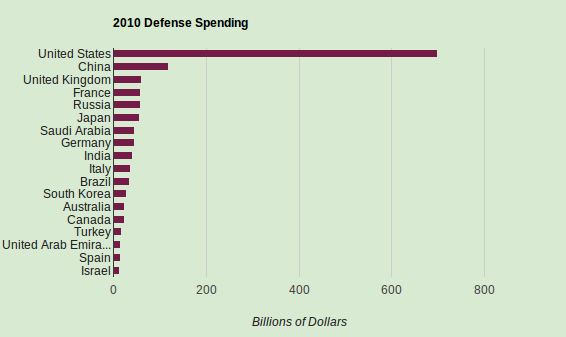
The eighteen countries with the largest military budgets. See table below for actual dollar amounts.
Military Expenditures
The eighteen nations with the largest military budgets in 2010 are shown in the chart above (click to enlarge). The United States, with a budget of $698 billion, spends more on defense than the next seventeen nations combined. The United States military spending is almost six times that of the next biggest spender, China ($119 billion) and more than eleven times that of Russia ($59 billion).
The Department of Defense budget in fiscal year 2010 accounted for 19% of the United States federal budget and 28% of estimated tax revenues. The U.S. accounts for 40% of the world’s yearly defense outlays.
Defense Spending by GDP – Top Ten Countries
- Eritrea 20.9%
- Saudi Arabia 11.2%
- Oman 9.7%
- United Arab Emirates 7.3%
- Timor Leste 6.8%
- Israel 6.3%
- Chad 6.2%
- Jordan 6.1%
- Georgia 5.6%
- Iraq 5.4 %
When spending is considered by percent of gross domestic product (GDP), the United States is not even in the top ten. At 4.7% of GDP the U.S. falls to eleventh place.
Six of the ten countries listed are in the Middle East where there are sharp regional tensions. The fear of conventional military attack is very real which helps justify high defense spending.
Internal instability is a growing factor and is a threat to the existing power structure within states, as demonstrated by recent uprisings in Tunisia, Egypt, Libya, and other Middle East countries.
GDP percentages are for 2009, except for Eritrea (2003). The list contains seven countries that do not appear in the table below because their total military spending is lower than the top thirty nations.
Table Of Defense Spending – Top 30 Countries in 2010
Click ONCE on column headers to sort.
| Country | $billion1 | $ Rank | %GDP2 | %GDP Rank3 | $ Per Capita |
|---|---|---|---|---|---|
| United States4 & 8 | 698.3 | 1 | 4.7 | 11 | 2,260 |
| China9 | 119.4 | 2 | 2.2 | 55 | 88 |
| United Kingdom | 59.6 | 3 | 2.7 | 45 | 963 |
| France | 59.3 | 4 | 2.5 | 47 | 915 |
| Russia | 58.7 | 5 | 4.3 | 14 | 419 |
| Japan7 | 54.5 | 6 | 1.0 | 129 | 429 |
| Saudi Arabia5 | 45.2 | 7 | 11.2 | 2 | 1,727 |
| Germany | 45.2 | 8 | 1.4 | 99 | 550 |
| India | 41.3 | 9 | 2.8 | 42 | 34 |
| Italy11 | 37.0 | 10 | 1.8 | 77 | 615 |
| Brazil | 33.5 | 11 | 1.6 | 88 | 172 |
| South Korea10 | 27.6 | 12 | 2.9 | 39 | 569 |
| Australia | 24.0 | 13 | 1.9 | 70 | 1,115 |
| Canada | 22.8 | 14 | 1.5 | 91 | 672 |
| Turkey | 17.5 | 15 | 2.7 | 44 | 231 |
| United Arab Emirates12 | 16.1 | 16 | 7.3 | 4 | 3,410 |
| Spain | 15.4 | 17 | 1.1 | 122 | 339 |
| Israel6 | 14.0 | 18 | 6.3 | 6 | 1,929 |
| Netherlands | 11.2 | 19 | 1.5 | 93 | 671 |
| Colombia | 10.7 | 20 | 3.7 | 25 | 232 |
| Greece | 9.4 | 21 | 3.2 | 34 | 835 |
| Taiwan | 9.1 | 22 | 2.4 | 49 | 395 |
| Poland | 8.9 | 23 | 1.8 | 78 | 234 |
| Singapore | 8.4 | 24 | 4.3 | 13 | 1,736 |
| Indonesia | 7.2 | 25 | 0.9 | 136 | 31 |
| Chile5 | 6.9 | 26 | 3.5 | 28 | 404 |
| Norway | 6.7 | 27 | 1.6 | 87 | 1,385 |
| Algeria | 5.7 | 28 | 3.8 | 21 | 160 |
| Pakistan | 5.6 | 29 | 2.8 | 43 | 31 |
| Sweden | 5.6 | 30 | 1.2 | 118 | 607 |
Notes
- Figures are in US $billions at 2010 prices and exchange rates.
- Percent GDP is for 2009.
- Percent GDP ranking is included because high expenditure countries are not necessarily spending at high percent of GDP.
- $159.3 billion of the U.S. budget is for “Overseas Contingency Operations,” to fight the wars in Afghanistan and Iraq.
- Figures for Chile and Saudi Arabia are for the adopted budget, rather than actual expenditure.
- Figures for Israel do not include spending on paramilitary forces.
- Figures for Japan do not include military pensions.
- Figures for the USA are for financial year (1 October to 30 September of stated year).
- Figures for China are estimates, including estimates for items not in the official defense budget.
- Figures for South Korea do not include spending on relocations and welfare of $974 million dollars.
- Figures for Italy include spending on civil defence, which typically amounts to 4.5% of the total.
- Figures for United Arab Emirates are uncertain and lacking in transparency. The only available source of data is from the IMF.
Sources
- SIPRI Military Expenditure Database 2011, http://milexdata.sipri.org.
- Dollars per capita were calculated using 2010 populations via Wolfram Alpha.
- U.S. military budget percentages from Wikipedia, accessed 4 June 2011.
- DoD photo by Chief Warrant Officer 2nd Class Clinton W. Runyon, U.S. Marine Corps.

Dinosaurs at Hogle Zoo
Yesterday’s visit to Hogle Zoo with Jill, Adelaide, and my grandchildren found us encountering dinosaurs. Their heads and necks moved and they made noises so as to appear more life-like. The Dilophosaurus even spit water out of its mouth which scared my granddaughter Aurora and quite surprised me just as I was about to take its photograph.
The dinosaurs are presented in alphabetical order. If you click on the photographs, they will either show a larger version of the same photograph or a different shot of the same dinosaur.
Allosaurus
Allosaurus (different lizard) is the state fossil of Utah. The powerful skull of Allosaurus was a perfect meat-eating machine. The jaws were large and massive, with serrated teeth for cutting meat. The skull was composed of separated pieces that could be disjointed allowing him to swallow enormous chunks of meat whole. Allosaurus constantly grew, shed and replaced it teeth, some of which averaged three or four inches in length.
Dilophosaurus
Dilophosaurus (double-crested lizard) had colorful crests that could have been used to attract mates. In the movie Jurassic Park, Dilophosaurus paralyzed its prey by spitting blinding venom in the eyes. There is no evidence of this but it does make for a good story.
Kentrosaurus
Kentrosaurus (sharp-point lizard) had plates along the low back tail that most likely served a defensive function. The tail had two pairs of sharp, two-foot spikes that were probably used for lashing out against predators. The plates may have had blood flowing through them to help heat and cool the dinosaur’s body.
Megalosaurus
Megalosaurus (great lizard) had curved teeth with a serrated edge and strong claws on each toe and finger. The curved claws were designed for seizing and holding prey, while the jaws were the main killing tool. Megalosaurus was the first dinosaur to be discovered, in England in 1676.
Parasaurolophus
Parasaurolophus (crested lizard) had a hollow head-crest that allowed it to make a sound like a trombone. The noise may have been used to “talk” to the rest of the herd, warning them about approaching predators.
Rhinosaurus
Rhinosaurus (horned nose) is characterized by its large size, an herbivorous diet, large horns, and a thick protective skin. The Rhinosaurus can exceed 7,700 pounds in weight and have a head and body length of 15 feet. They are extremely nearsighted; making the Rhinosaurus dangerous and unpredictable, and likely to charge unfamiliar sounds and smells.
Styracosaurus
Styracosaurus (spiked lizard) used its horns for defense and could charge like a rhino to protect itself. But because its frill was not solid bone and was easily punctured, some researchers theorize that it may have been able to flush the frill with blood creating eyespots to scare predators away.
Tyrannosaurus Rex
Tyrannosaurus Rex (tyrant lizard king) was one of the largest animal predators. With a 5-foot-long head, 8-inch long teeth and a bite three times stronger than a lion’s, it could eat 200 pounds of meat in one bite. The little arms were extremely strong for holding on to struggling prey. It had a keen sense of smell, bone-crushing bites, and super speed.
Notes and News
- Not shown here but on display at Hogle Zoo: Coelophysis, Suchmimus, and Brachiosaurus.
- Dinosaur details are from onsite information displays.
- At 1 pm we were fortunate to experience first-hand feeding time at the zoo.
- An extensive multi-animal habitat, called Rocky Shores, featuring polar bears, sea lions, seals and brown bears will open in the Spring of 2012.

- « Previous Page
- 1
- …
- 5
- 6
- 7
- 8
- 9
- …
- 76
- Next Page »
